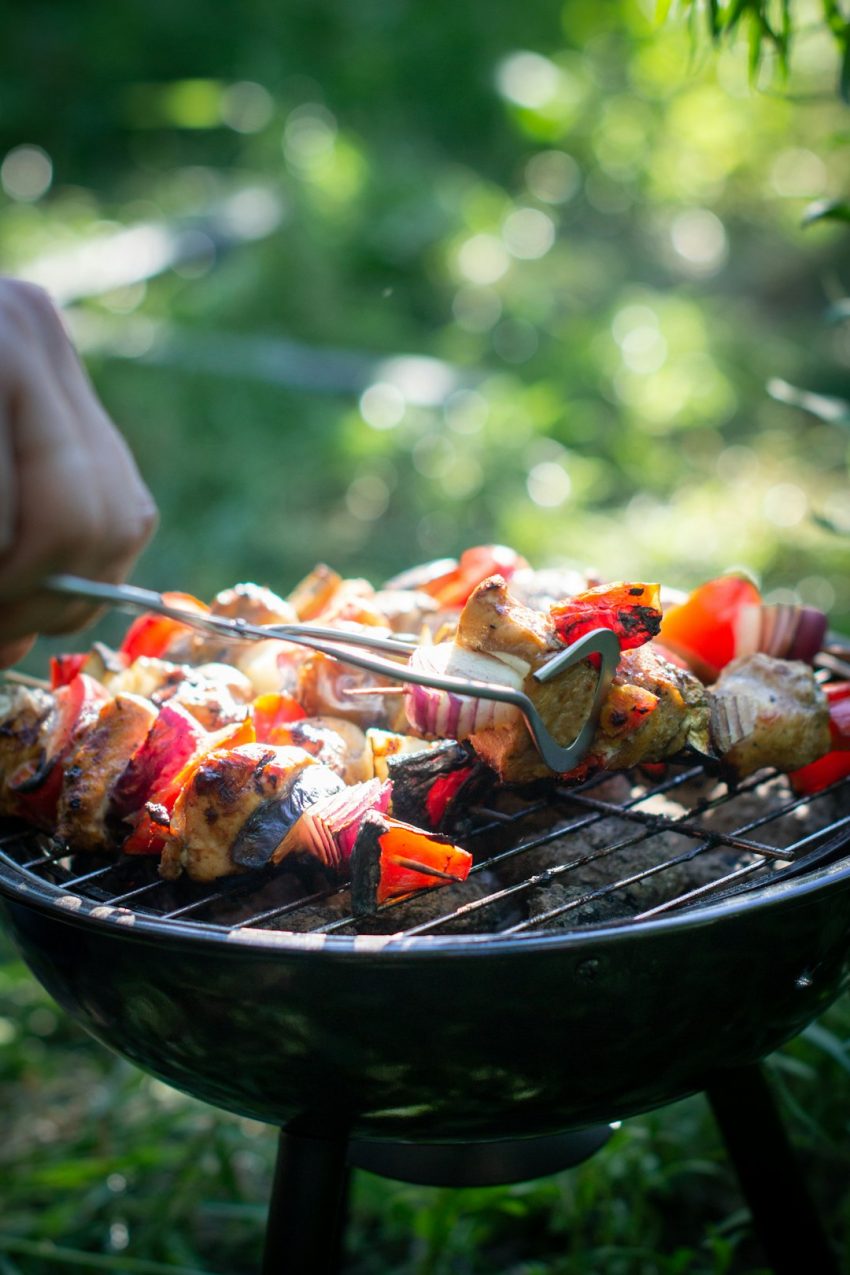For a delicious BBQ beef recipe like burnt ends with caramelized edges, choose brisket or rib eye steak. Marinate and season high-quality meat, then preheat your grill for high heat. Smoke the meat at 225°F to 275°F (107°C to 135°C) for a tender, juicy interior with a charred exterior. Caramelize edges at 250-300°F (120-150°C) after drying the meat and applying oil. Slow-cooking transforms tough cuts into rich, smoky beef burnt ends. Present the dish on a crispy vegetable bed with coleslaw or barbecue sauce. Season generously with a dry rub and target an internal temp of 195-205°F (91-96°C) for perfect caramelized edges.
Unleash the smoky, mouthwatering allure of caramelized beef burnt ends—a true BBQ lover’s delight! This comprehensive guide takes you on a journey from choosing the perfect cut of meat to mastering the art of slow-cooking. Learn the secrets to crafting a delicious marinade, finding the ideal smoking temperature, and achieving those tantalizing, caramelized edges. Discover serving suggestions that elevate your dish and become the talk of any BBQ gathering with this ultimate BBQ beef recipe.
- Choosing the Right Cut of Beef for Burnt Ends
- Preparing the Meat: Marinade and Seasoning
- The Art of Smoking: Finding the Perfect Temperature
- Caramelizing Edges: Techniques and Timing
- Slow-Cooking for Tender Results
- Serving Suggestions: Pairings and Presentation
- Tips for Mastering Your Next BBQ Beef Recipe
Choosing the Right Cut of Beef for Burnt Ends
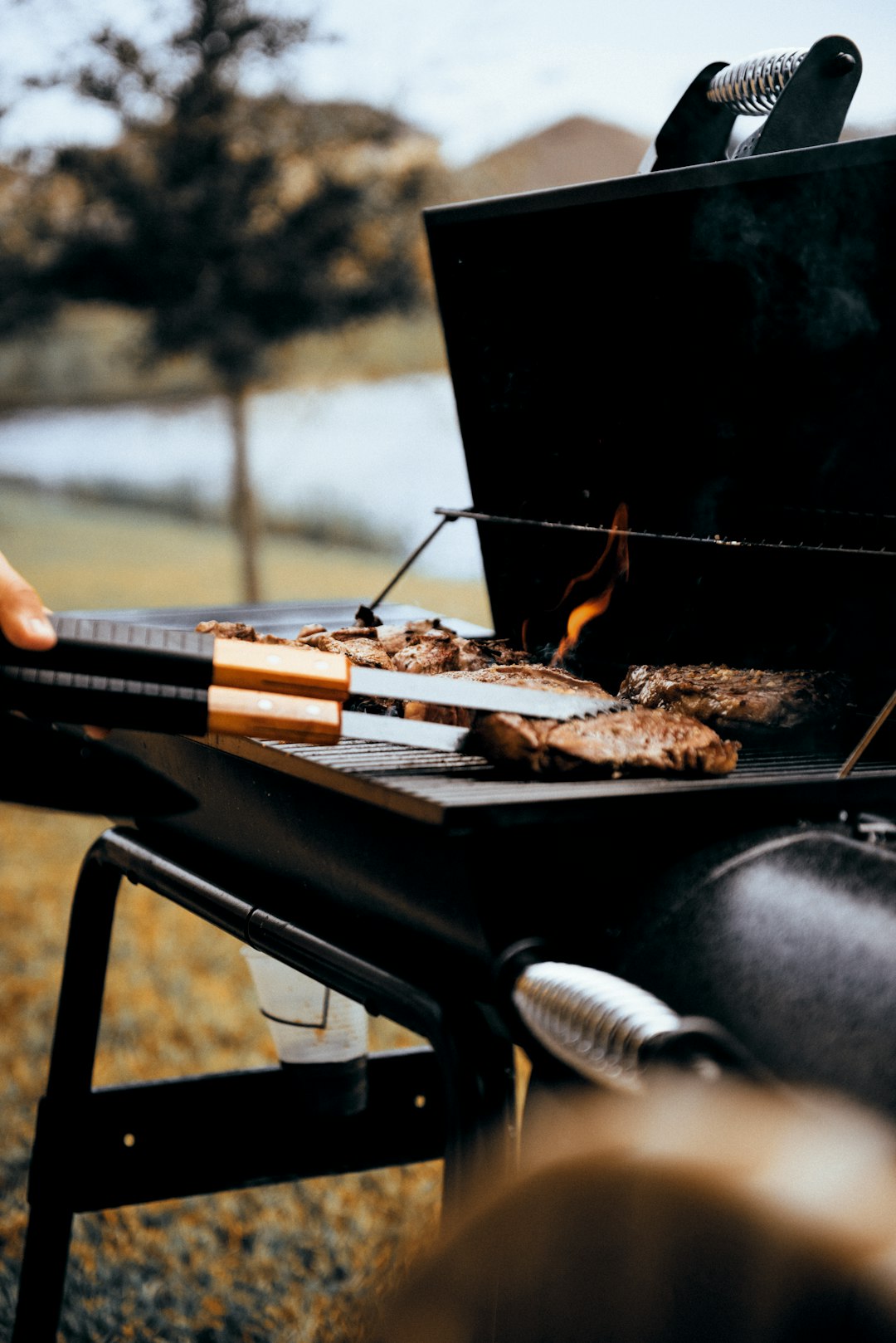
When crafting smoky beef burnt ends with caramelized edges, selecting the ideal cut of meat is a crucial first step for any barbecue enthusiast. For this mouthwatering bbq beef recipe, look no further than brisket or rib eye steak. Brisket, known for its generous marbling and rich flavor, offers a perfect blend of tenderness and robust taste when slow-cooked to perfection. Its flat shape also makes it ideal for even cooking over low, indirect heat.
Alternatively, rib eye steak provides an exquisite option with its beautiful marbling and tender texture. Choosing a high-quality, well-marbled cut ensures that your burnt ends will be both flavorful and succulent. Properly prepared, these cuts transform into delectable pieces, showcasing the art of caramelizing edges while locking in juicy goodness – a true delight for any barbecue recipe enthusiast.
Preparing the Meat: Marinade and Seasoning
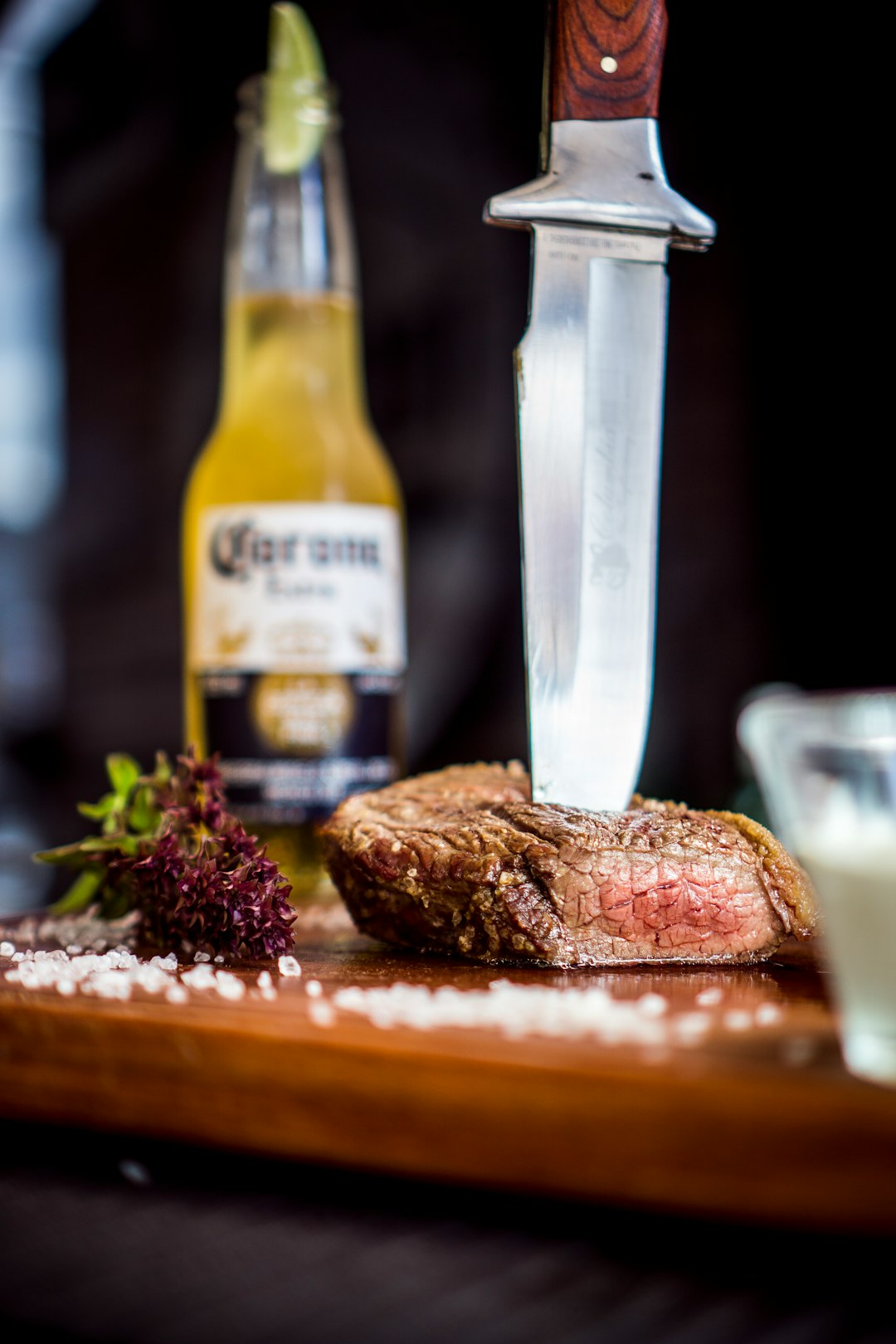
Preparing the meat for smoky beef burnt ends with caramelized edges, often referred to as a BBQ beef recipe, begins with marinating and seasoning. Start by selecting high-quality brisket or similar cuts of beef. Marinades can be as simple as a mixture of soy sauce, garlic, and brown sugar, or more complex blends incorporating spices like paprika, cumin, and peppercorns. Allow the meat to soak in the marinade for several hours or overnight for optimal flavor penetration.
Once marinated, pat the beef dry before seasoning generously with coarse salt and freshly ground black pepper. This step ensures an even sear and caramelization during cooking. Preheating your grill to high heat is crucial to achieving those desirable burnt ends—a signature of a true BBQ beef recipe. The intense heat will not only cook the meat but also intensify its flavors, resulting in a mouthwatering dish that’s sure to impress.
The Art of Smoking: Finding the Perfect Temperature
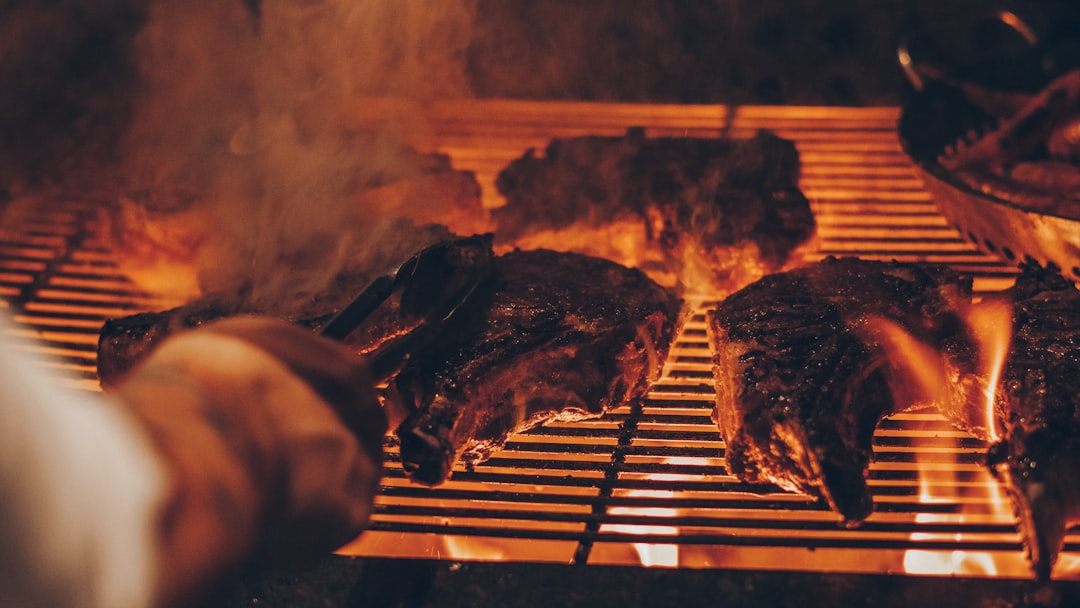
The art of smoking is a delicate balance, especially when crafting a mouthwatering BBQ beef recipe like smoky beef burnt ends. The perfect temperature plays a pivotal role in achieving that delectable charred exterior and tender, juicy interior. Generally, low-and-slow is the motto for smoking meat to perfection. Cooking at lower temperatures, often between 225°F to 275°F (107°C to 135°C), allows the smoke to permeate the beef slowly, infusing it with flavor and moisture. This method ensures a long, slow cook that can take several hours but results in remarkably tender meat.
Mastering the temperature is key to preventing overcooking, which can lead to tough, dry meat. The ideal range allows for gradual caramelization of the exterior, creating those desired burnt ends with their crisp, caramelized edges and succulent center. This precise control is crucial when aiming for that perfect BBQ beef recipe, transforming simple beef brisket or ribs into a showstopper that’s sure to impress at any gathering.
Caramelizing Edges: Techniques and Timing
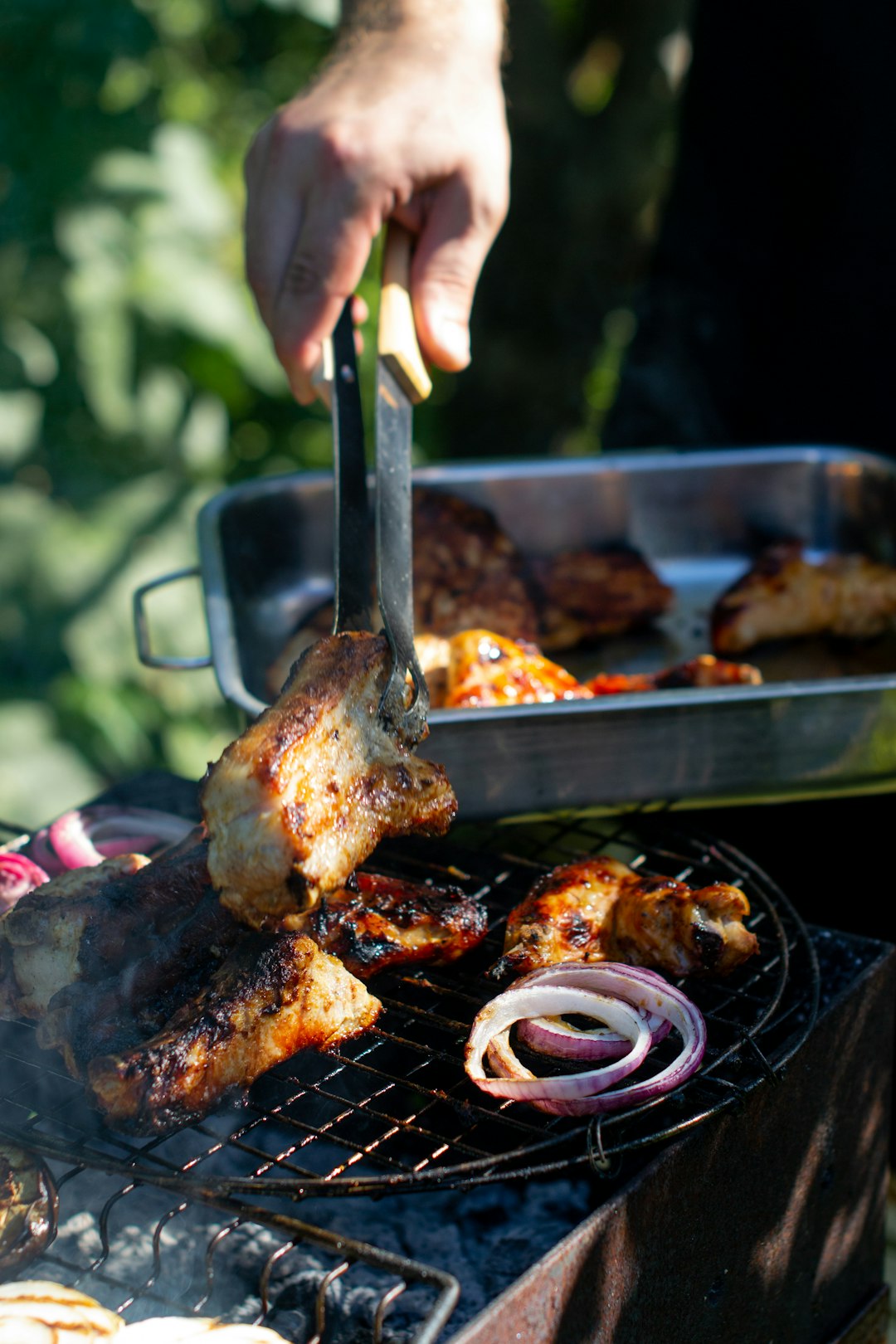
Caramelizing edges is a crucial step in crafting the perfect BBQ beef burnt ends. This technique involves slowly cooking meat at high temperatures, allowing the exterior to develop a golden-brown, caramelized crust while keeping the interior tender and juicy. The key lies in controlling heat and time. For best results with your bbq beef recipe, preheat your grill or smoker to a consistent temperature between 250-300°F (120-150°C). This gentle heat is essential for slow cooking, ensuring the interior reaches the ideal doneness without overcooking the exterior.
When preparing your beef, whether it’s brisket or rib ends, pat them dry first to promote even caramelization. Rubbing a small amount of oil onto the meat can also help achieve those desirable crispy edges. Place the meat on the grill or in the smoker, and cook until nicely browned on one side, then carefully flip it over to expose the other side to direct heat. This process should take around 2-3 hours, depending on the cut and desired doneness. Regularly rotate and baste with your favorite BBQ sauce or a simple mixture of butter, brown sugar, and spices for added flavor and to prevent burning.
Slow-Cooking for Tender Results
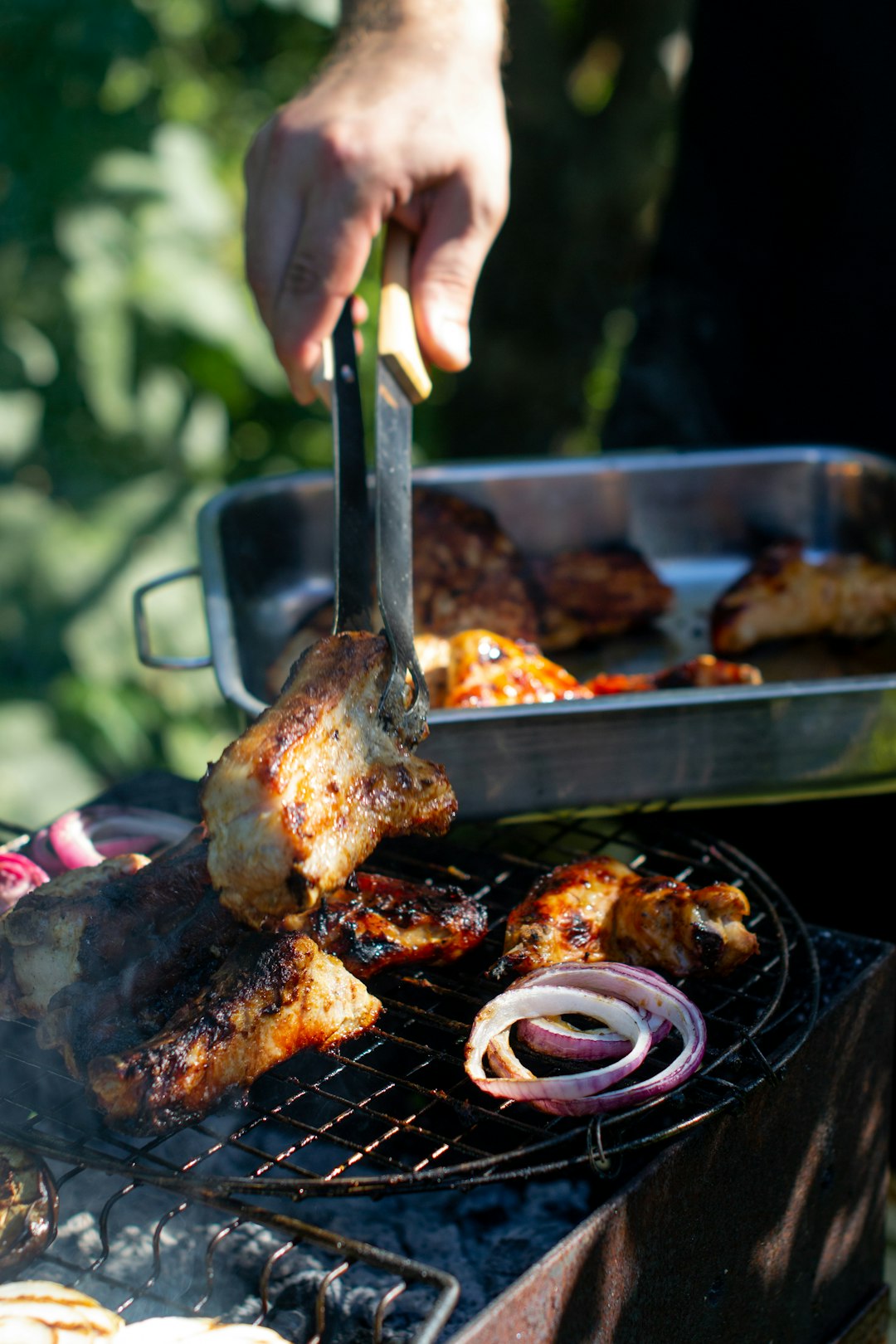
Slow-cooking is a secret weapon for achieving tender, succulent BBQ beef burnt ends with caramelized edges. By taking your time and allowing the meat to cook slowly over low heat, you break down the connective tissues in the beef, resulting in incredibly juicy and flavorful pieces. This method is particularly ideal for tougher cuts of meat, such as brisket or chuck roast, which transform into mouthwatering treats after hours of gentle cooking.
In a BBQ beef recipe like smoky burnt ends, slow-cooking allows flavors to meld together as well. The low and slow approach encourages the natural juices to circulate within the meat, ensuring every bite is packed with rich, smoky taste from caramelizing the edges just right. Whether you’re a barbecue enthusiast or a home cook looking to impress, this technique is key to unlocking the full potential of your BBQ beef recipe.
Serving Suggestions: Pairings and Presentation
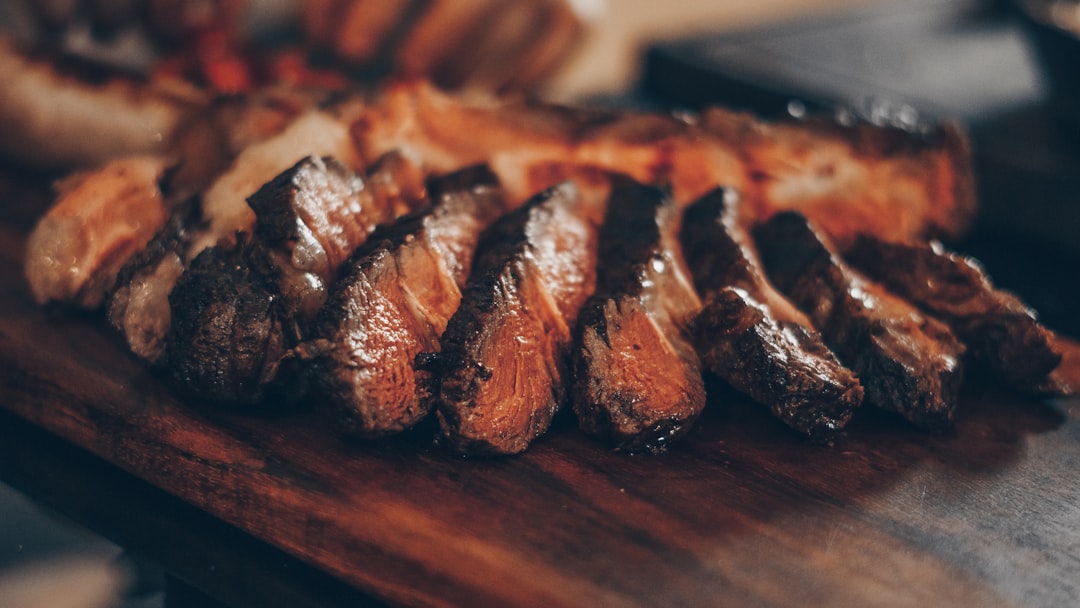
When serving these smoky beef burnt ends with caramelized edges, think about creating a balanced plate that showcases the dish’s complexity. Start with a bed of crispy, roasted vegetables like broccoli florets or carrots to contrast the tender meat. Arrange the burnt ends on top, allowing their rich, smoky flavors and caramelized exteriors to shine. Accompany the dish with a side of creamy coleslaw or a tangy barbecue sauce for added depth. For a true BBQ beef recipe experience, pair it with crispy potato wedges or a refreshing craft beer to complement the robust flavors. Presentation-wise, consider using a rustic platter or wooden board to elevate the overall look and feel of the dish.
Tips for Mastering Your Next BBQ Beef Recipe
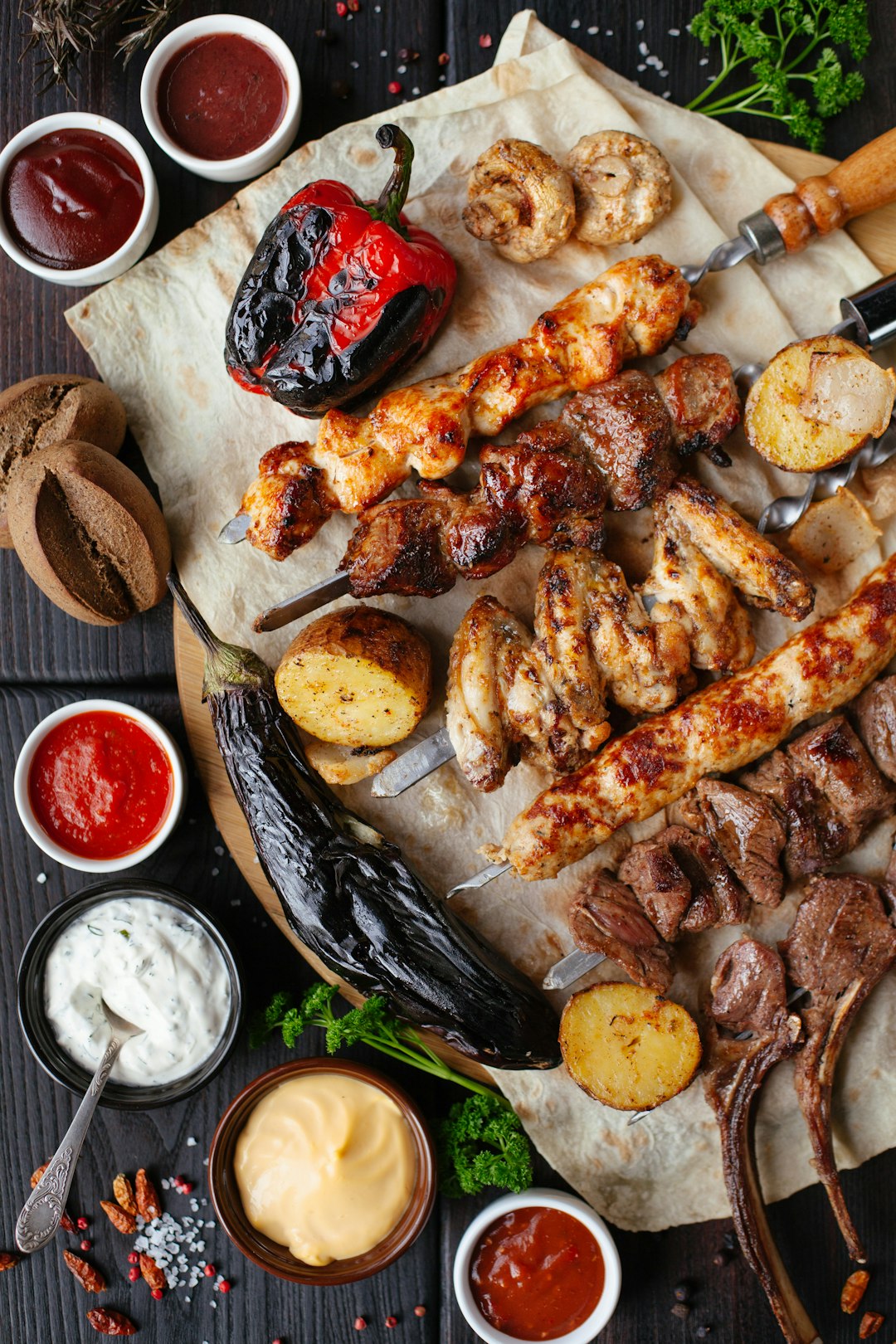
Mastering the perfect BBQ beef recipe is an art, and with these tips, you’ll be smoking your next batch like a pro. First, choose the right cut of meat. For burnt ends, look for a boneless beef brisket or rib roast. The fat content is key; it adds flavor and helps keep the meat moist during slow cooking. Start by seasoning your beef generously with a dry rub made from salt, pepper, paprika, garlic powder, and brown sugar. This step is crucial for that delicious caramelized crust.
Next, fire up your smoker at a low temperature—around 225°F (107°C). Patience is essential; slow and steady cooking allows the meat to develop its flavor and ensures tender, juicy results. Use a meat thermometer to track the internal temperature. For mouthwatering burnt ends, aim for around 195-205°F (91-96°C) before applying your favorite BBQ sauce. This process creates that classic smoky flavor while keeping the edges perfectly caramelized.
